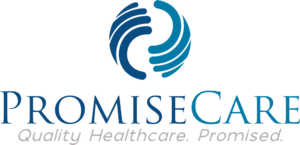Navigating the complexities of colloidal silver requires critically evaluating its safety, efficacy, and potential interactions.
Medical professionals at PromiseCare Medical Group in Hemet, California, say colloidal silver is often touted as a natural remedy with antimicrobial properties. However, its unproven health claims and potential risks, including permanent skin discoloration, raise concerns.
Numerous products are marketed in the US under various brand names, so it’s essential to examine the scientific evidence and consult with a healthcare professional before considering their use.
Unraveling the mysteries surrounding colloidal silver will reveal a more nuanced reality, demanding a closer look at its effects on human health.
Description and Brand Names
Colloidal silver, a purported natural remedy, has been marketed as a dietary supplement with a broad spectrum of health benefits, despite a notable lack of scientific backing. It consists of tiny silver particles suspended in liquid and is also referred to as silver proteins, colloidal silver proteins, and nano-silver.
Many colloidal silver products are considered misbranded by regulatory authorities due to unproven health claims and a lack of medical use approval. When considering products claiming health benefits without concrete scientific evidence, it’s essential to think twice and prioritize proof over promise.
Regulatory bodies have raised concerns about the safety of colloidal silver products, highlighting the need for caution when exploring this supplement.
US Brand Name
Numerous colloidal silver products are available in the US market, often marketed under various brand names and claiming unique blends of antimicrobial properties and health benefits. These products come in different forms, such as liquid solutions, gels, or sprays, and promise to cure various ailments, from colds to skin infections. However, the validity of these health claims could be better.
Colloidal silver products are often promoted as natural remedies, but none have received approval for safety or efficacy in treating medical conditions. The lack of regulation raises concerns about the concentration of silver in these products, which can vary from 10 to 30 parts per million (ppm).
As a result, it’s crucial to be aware of the facts behind these products. Labeling a product as ‘natural’ doesn’t necessarily mean it’s safe or effective. Consulting a healthcare professional is recommended before trying any new supplement or treatment, including colloidal silver products.
Descriptions
Colloidal silver is a liquid solution containing tiny silver particles, often nanoparticles, suspended in water. It has been marketed as a dietary supplement for its antimicrobial properties, which were historically used to treat various infections before the advent of antibiotics. However, with the rise of antibiotics, its use has fallen out of favor.
The safety and effectiveness of colloidal silver have yet to be recognized by regulatory agencies, which have declared it unsafe for oral consumption. Misleading marketing claims often suggest it can treat a wide range of diseases, including cancer and HIV, but these claims lack scientific support and consensus.
Silver nanoparticles, a key component of colloidal silver, have been linked to skin discoloration, a condition known as argyria. With questionable health claims and potential risks, it’s essential to approach colloidal silver cautiously and critically evaluate the scientific evidence supporting its use.
Before Using
When considering the use of colloidal silver, individual health factors, such as allergies, age, and life stage, are crucial in determining its suitability, including pregnant or breastfeeding women.
A person’s medical profile, including any prescription medications, is also essential in assessing potential interactions with colloidal silver.
It’s essential to weigh these factors before deciding to use this supplement.
Allergies
Using colloidal silver can be risky for individuals with a slight sensitivity to silver, as it can trigger an allergic reaction and cause skin irritations, rashes, or other hypersensitivity responses.
The body’s unique chemistry significantly affects how one reacts to colloidal silver. Individuals allergic to metals or with a history of sensitive skin should exercise caution. Before using colloidal silver, a healthcare consultation is recommended to discuss concerns and determine the best course of action.
A patch test is a simple way to check for adverse reactions to colloidal silver, especially for topical applications. Applying a small amount to a discreet skin area and monitoring for signs of irritation, such as redness, itching, or swelling, can help identify potential issues.
Prolonged exposure to colloidal silver may increase the likelihood of developing sensitivity or an allergic reaction. If unusual symptoms or reactions occur, discontinue use and consult a healthcare provider.
Being proactive and aware of the body’s responses can minimize the risk of allergic reactions and allow for the safe use of colloidal silver.
Pediatric
Parents naturally want to explore all possible remedies when a child is ill, but caution is essential when considering colloidal silver for pediatric use.
The safety and efficacy of colloidal silver in children remain unproven and potentially hazardous. The FDA has warned against using colloidal silver in children due to the risk of severe side effects like argyria, a condition that can permanently turn skin a bluish-gray color.
Three key concerns highlight the need for extreme caution:
- Lack of safety data: There is a need for more research to support the safe use of colloidal silver in children.
- Risk of argyria and organ damage: The potential for irreversible harm is too great to ignore.
- No established dosage levels: Without clear guidelines, the risk of overdose or adverse reactions increases exponentially.
Before considering colloidal silver or any alternative treatment, it’s crucial to consult with a healthcare provider.
They can help navigate the safest, most effective options for the child’s health. Evidence-based treatments should be prioritized, and unproven remedies that may risk the child’s safety should be avoided.
Geriatric
Older adults must exercise extreme caution before using colloidal silver due to the increased risk of adverse effects and interactions with age-related medications. The body’s ability to process and eliminate silver slows down with age, making older adults more susceptible to argyria, a condition where silver deposits turn the skin bluish-gray.
Colloidal silver has been declared unsafe for oral consumption, and older adults are more likely to experience side effects from prolonged use. Individuals with compromised kidney or liver function are at an even higher risk. These organs are vital for removing silver from the body, and impaired function can lead to toxic buildup.
Older adults may already be managing multiple health issues, and it’s essential to prioritize evidence-based treatments. Before considering colloidal silver, consulting with a healthcare provider is crucial to ensure informed decision-making and avoid potential health complications.
Prioritizing tried-and-true treatments can help older adults stay safe and healthy. By being cautious and proactive, they can protect themselves from the potential dangers of colloidal silver.
Breastfeeding
When caring for a newborn, it’s crucial to consider the potential risks associated with using colloidal silver while breastfeeding. The concern is just as pressing for older adults but with an added layer of vulnerability – the health and well-being of the infant.
Colloidal silver isn’t recommended during breastfeeding due to the potential risks of silver accumulation in both the mother and the baby.
Three key concerns to consider include:
- Argyria and Adverse Effects: Colloidal silver can lead to adverse effects like argyria, which may harm the breastfeeding infant if silver is excreted in breast milk.
- Systemic Toxicity and Organ Damage: The potential for systemic toxicity and organ damage from colloidal silver raises concerns about its safety for nursing mothers and their babies.
- Limited Safety Data and Unverified Health Claims: Safety data on colloidal silver’s effects on breastfeeding infants is limited, and the lack of required proof of safety or efficacy increases the risk of unverified health claims that may mislead breastfeeding mothers.
Breastfeeding mothers should consult a healthcare provider before using colloidal silver to ensure the best decision for their infant’s health.
Drug Interactions
Colloidal silver can disrupt the body’s delicate balance of medications by interfering with the absorption of certain prescription drugs, putting health at risk. Taking colloidal silver concurrently with antibiotics can diminish their efficacy. Research has shown that colloidal silver can reduce the effectiveness of certain medications when taken together.
Individuals taking anticoagulants should be cautious, as silver may have blood-thinning effects that could complicate treatment. Using colloidal silver alongside other treatments isn’t recommended due to the lack of established safety and interaction profiles.
It’s essential to consult a healthcare provider before introducing colloidal silver into a treatment regimen, especially when taking prescription medications or having underlying health conditions. Prioritizing caution and informed decision-making is crucial to avoid compromising the efficacy of drugs or exacerbating a condition.
Knowing potential drug interactions can help protect well-being and ensure a safer, more effective treatment journey.
Other Interactions
Be aware of interactions before colloidal silver can significantly impact its safety and effectiveness. These interactions include its potential to disrupt the absorption of certain medications, pose risks to pregnant or breastfeeding women, and trigger severe side effects in some individuals. Awareness of these interactions is vital to avoid potential harm.
Colloidal silver may pose risks to fetal development and infants, so it’s recommended to avoid use during pregnancy and breastfeeding. Without proper guidance, self-medication with colloidal silver can lead to severe side effects like argyria and neurological damage. Additionally, colloidal silver may interact with other supplements or medications, emphasizing the importance of consulting a healthcare provider before use.
For safe use, it’s essential to consult with a healthcare provider to determine safe dosage levels and avoid potential toxicity. Awareness of these interactions allows for informed decisions about using colloidal silver for health. Caution should be prioritized, and a healthcare professional should be consulted before using colloidal silver.
Fundamental interactions to bear in mind include:
- Pregnancy and breastfeeding risks: Colloidal silver may harm fetal development and infants.
- Self-medication risks: Without proper guidance, self-medication with colloidal silver can lead to severe side effects like argyria and neurological damage.
- Interactions with other supplements and medications: Colloidal silver may interact with others.
Other Medical Problems
Multiple underlying medical conditions can increase the risk of adverse interactions with colloidal silver. Therefore, it’s crucial to assess overall health before considering its use.
Colloidal silver has been linked to argyria, a permanent skin discoloration. Long-term use can also lead to severe health risks, including neurological damage.
Pregnant or breastfeeding individuals face more pronounced risks, with potential harm to both the individual and the baby. There’s a lack of scientific evidence supporting the use of colloidal silver for diseases like diabetes, cancer, or HIV/AIDS. This results in an unfavorable risk-reward ratio.
Before considering oral ingestion of colloidal silver, it’s essential to consult healthcare professionals to discuss potential risks. They can help weigh the risks and make an informed decision prioritizing safety.
It’s crucial to prioritize health and avoid unproven remedies.
Proper Use
Proper use is essential when navigating the domain of colloidal silver, as the line between harnessing its potential benefits and succumbing to its risks is perilously thin. The condition of argyria can turn the skin into a bluish-gray hue, and other safety concerns can arise from improper use.
It’s crucial to be mindful of the concentration of colloidal silver products, typically ranging from 10-30 parts per million (ppm).
The following precautions should also be taken:
- Consult a healthcare professional: Before using colloidal silver, especially for topical applications, consulting a healthcare professional can help discuss potential side effects and ensure proper monitoring.
- Choose regulated products: Opting for regulated topical applications specifically designed for wound care can help minimize risks.
- Follow product guidelines: Product guidelines for application and usage are essential to avoid adverse reactions.
Dosing
Navigating the complex landscape of colloidal silver dosing requires caution. There’s no universally accepted safe dosage guideline, leaving individuals to sift through unregulated claims and unverified recommendations. A key consideration is the Environmental Protection Agency’s (EPA) guideline to limit daily silver exposure to 2.27 mcg per pound of body weight to mitigate health risks.
For those seeking to harness the purported benefits of colloidal silver, it’s essential to understand that oral consumption is strongly discouraged due to the lack of clinical evidence supporting its efficacy. Prolonged or high-dose usage can lead to argyria, a condition where the skin turns bluish-gray, and other serious health complications. Misleading marketing claims should be treated with skepticism, as self-medication with colloidal silver poses significant health risks.
While topical applications of silver dressings have regulated dosing guidelines, oral colloidal silver remains largely unregulated. It’s crucial to rely on scientific evidence and avoid unverified dosing recommendations. Caution is essential when exploring the use of colloidal silver.
Missed Dose
Missing a dose of colloidal silver can be a significant misstep, especially if taking it without medical supervision. How one responds to this missed dose can significantly impact the delicate balance between potential benefits and risks.
The body’s intricate mechanisms are at play, and neglecting the dosing schedule can send ripples through the system, affecting the efficacy and safety of the treatment.
When dealing with a missed dose of colloidal silver, consider the following:
- Don’t double up: If a dose is missed, take it as soon as possible unless it’s close to the time for the next dose. In that case, skip the missed dose and resume the regular schedule. Doubling up can increase the risk of side effects and toxicity.
- Reevaluate the treatment plan: If doses are frequently missed, it may be necessary to reassess the treatment plan and adjust the schedule to better suit individual needs.
- Monitor for side effects: Continuously monitor for side effects, especially after missed doses, to prevent potential accumulation and adverse reactions from prolonged use. Individual practices may vary based on personal health factors and general medical recommendations.
Storage
Proper storage is essential to preserving the potency of colloidal silver. This sensitive liquid must be shielded from the destructive forces of light and heat, which can ravage its stability and effectiveness. Light can degrade the quality of colloidal silver over time, so storing it in a glass or dark-colored container is recommended as a protective shield against the damaging effects of light.
When storing colloidal silver, checking the product label for specific instructions is crucial, as different formulations may have unique requirements. Generally, storing it in a cool, dark place, away from direct sunlight and heat sources, helps maintain its stability and effectiveness, ensuring the most out of the product.
Proper storage also prevents contamination and extends the shelf life, typically one to two years. The cap should be tightly sealed, and the inside of the cap or dropper shouldn’t be touched.
Precautions
When storing colloidal silver, caution is essential due to potential risks and side effects. Colloidal silver is likely unsafe for oral consumption. Long-term use can have devastating health effects, including cumulative toxicity targeting the liver, kidneys, and nervous system.
Significant facts to consider before using colloidal silver:
- Medical use warning: Colloidal silver has been considered unsafe since 1999, with no new products approved.
- Risk of argyria: Colloidal silver can cause permanent skin discoloration, argyria, and other serious health issues.
- Pregnancy and breastfeeding warning: Pregnant and breastfeeding individuals should avoid colloidal silver to prevent harming fetal and infant development.
Consult healthcare professionals before treating yourself with colloidal silver to guarantee safety and prevent interactions with other medications. Caution can prevent long-term regret.
Side Effects
Colloidal silver’s side effects can disrupt the body’s delicate balance, ranging from the visibly alarming to the internally devastating.
Argyria, a permanent bluish-gray skin discoloration, is a possible side effect, and prolonged oral ingestion can lead to serious health issues, including seizures and neurological impairment.
Silver accumulation in the body may also cause developmental issues in babies if used during pregnancy.
Colloidal silver can interact with certain medications, such as antibiotics and thyroid drugs, reducing their effectiveness.
Adverse effects like severe anemia, optic neuropathy, and gait problems have been reported.
These safety concerns are significant and should be considered before using colloidal silver.
The potential risks of silver accumulation and medication interaction make it essential to think twice before using this substance.



